


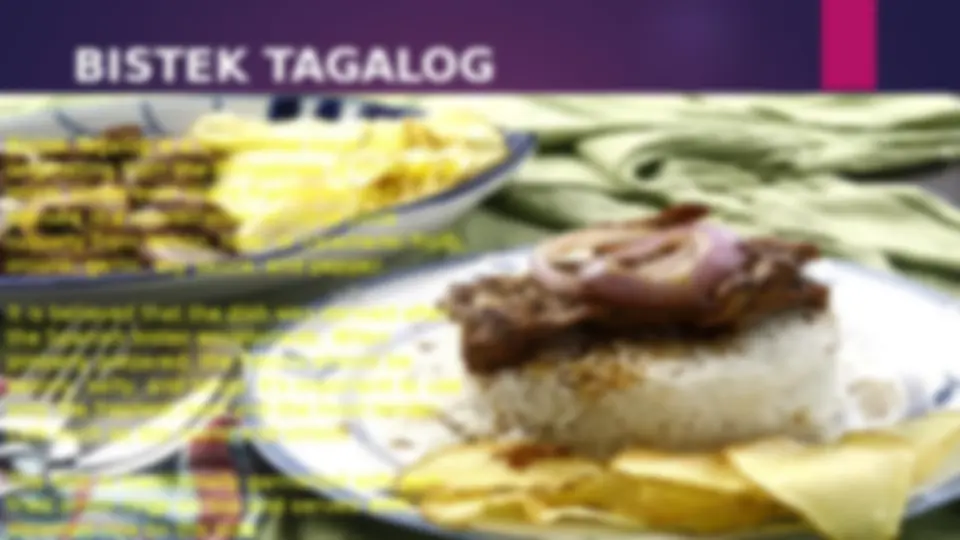



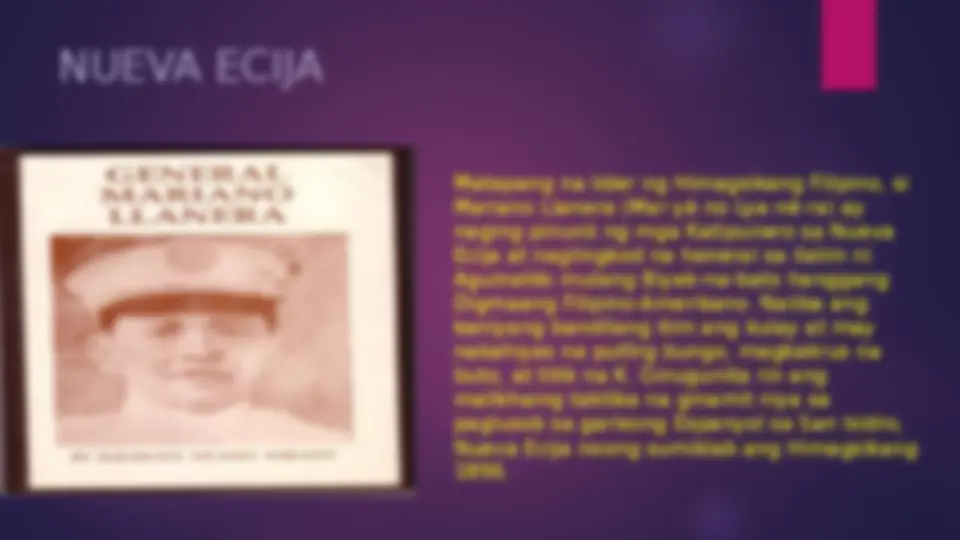
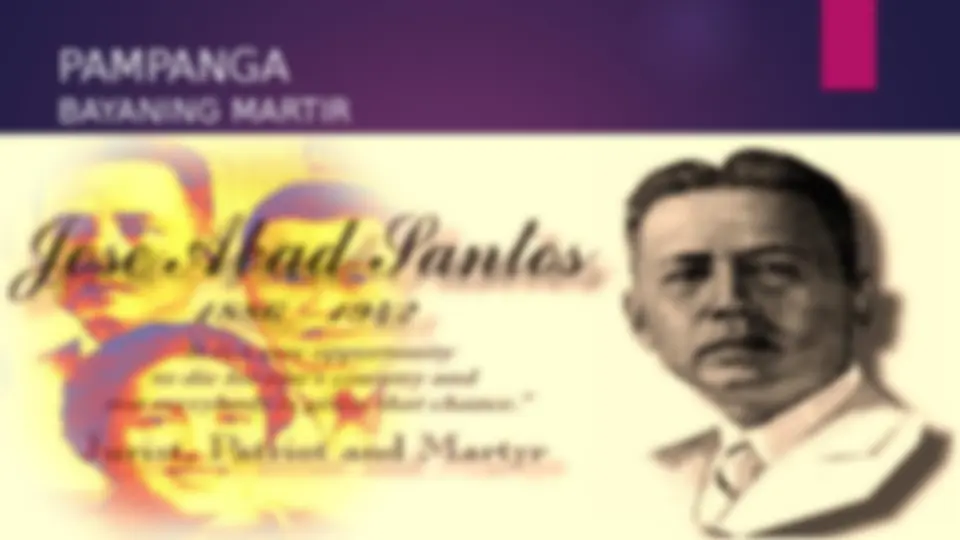

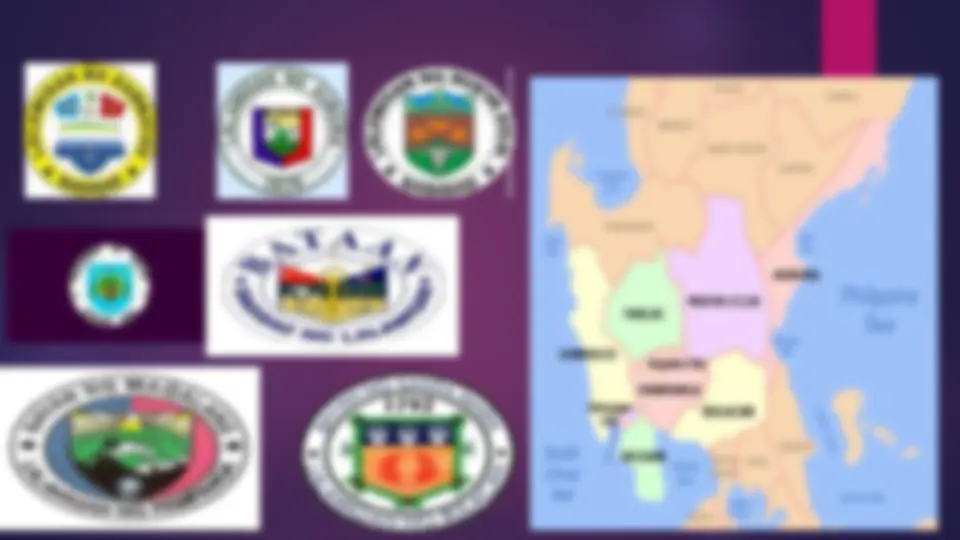
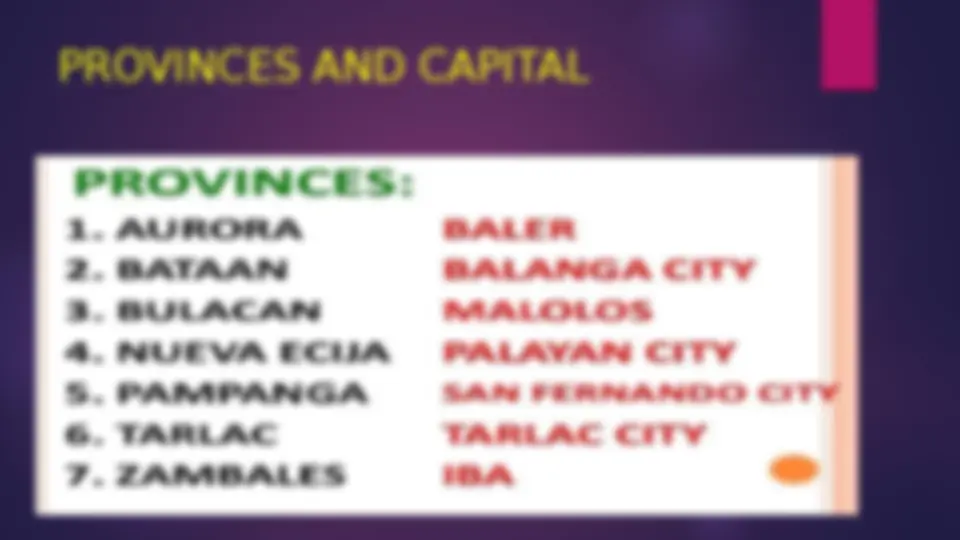

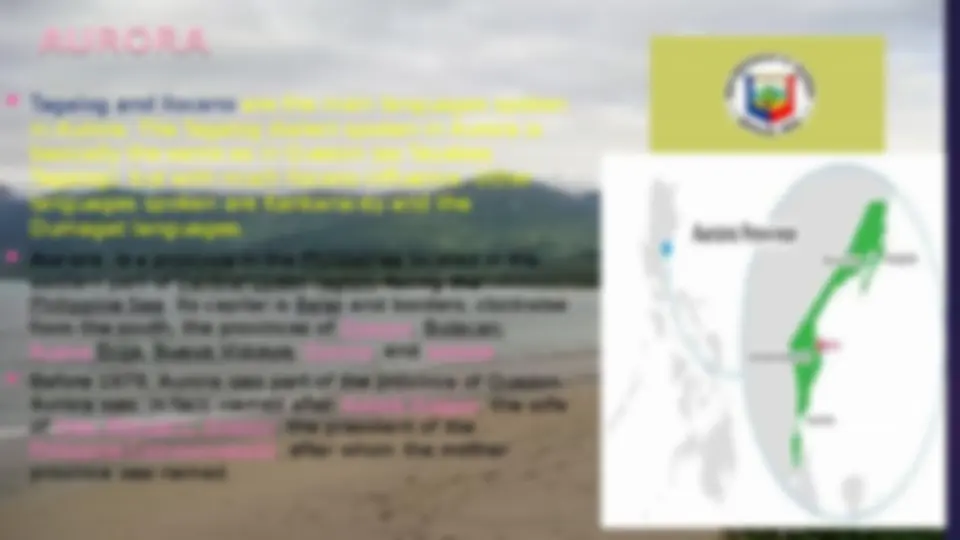



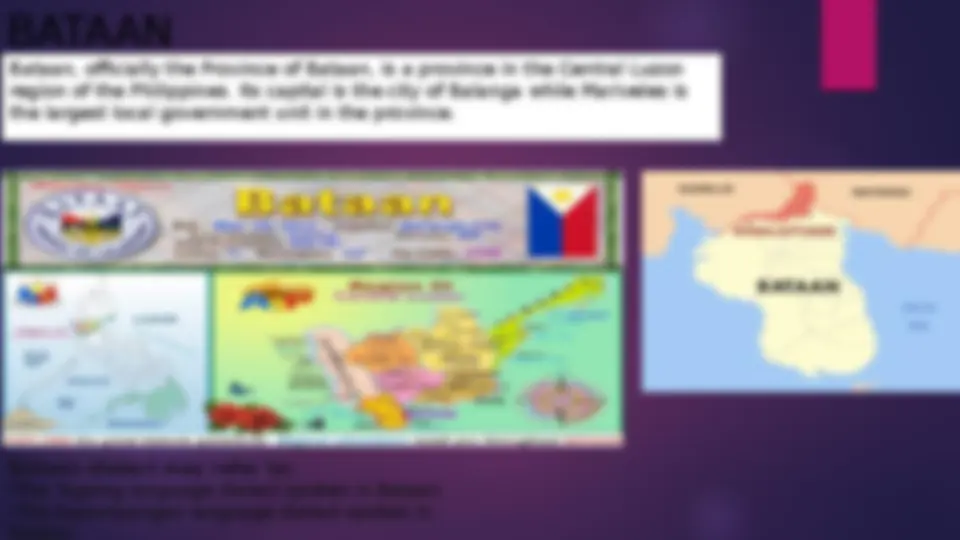

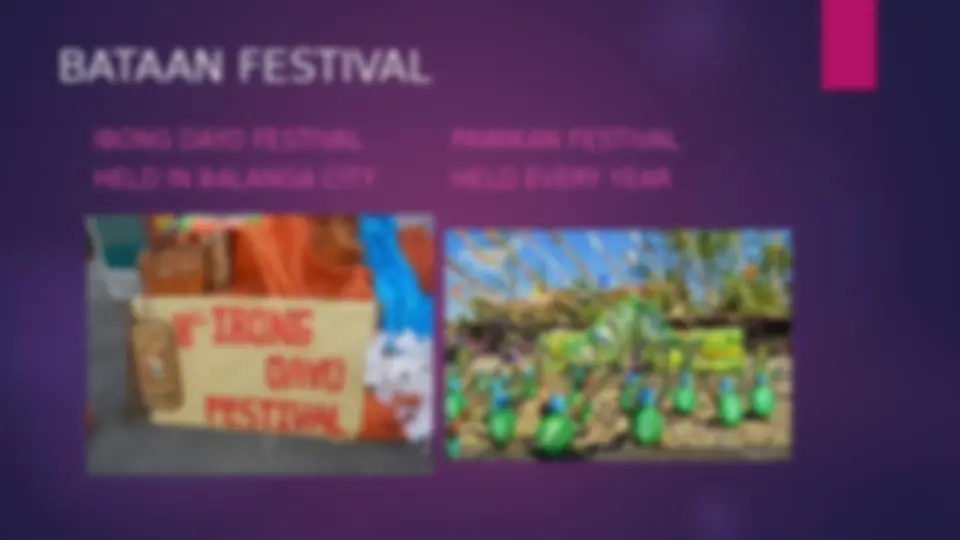
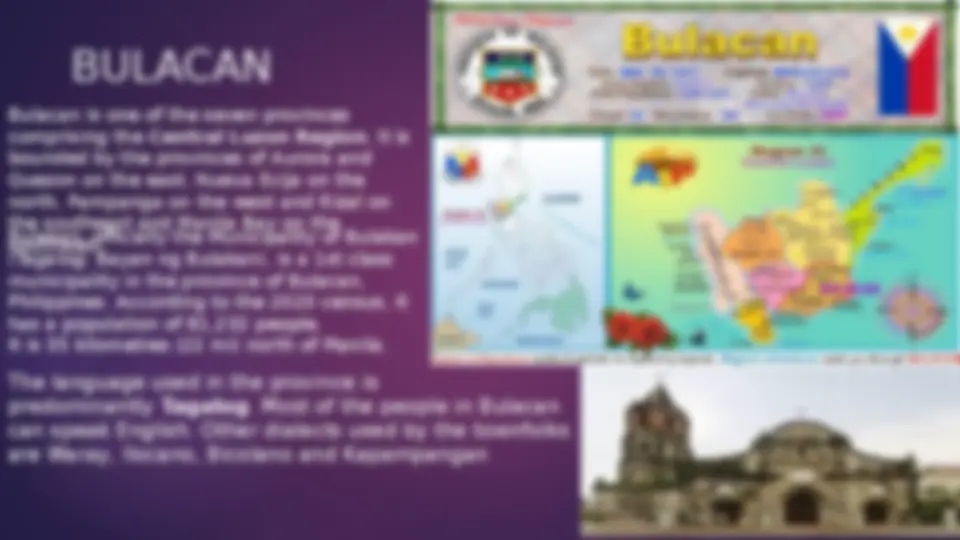
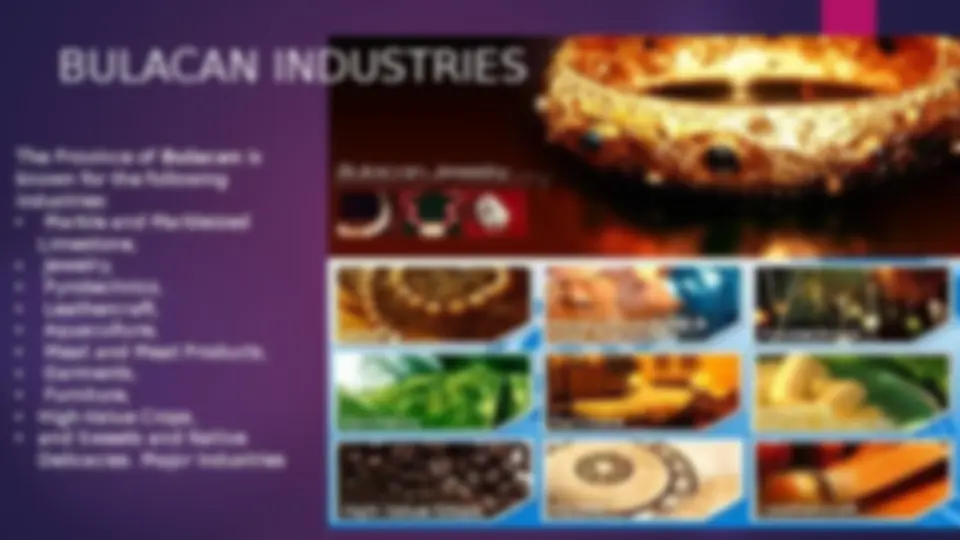


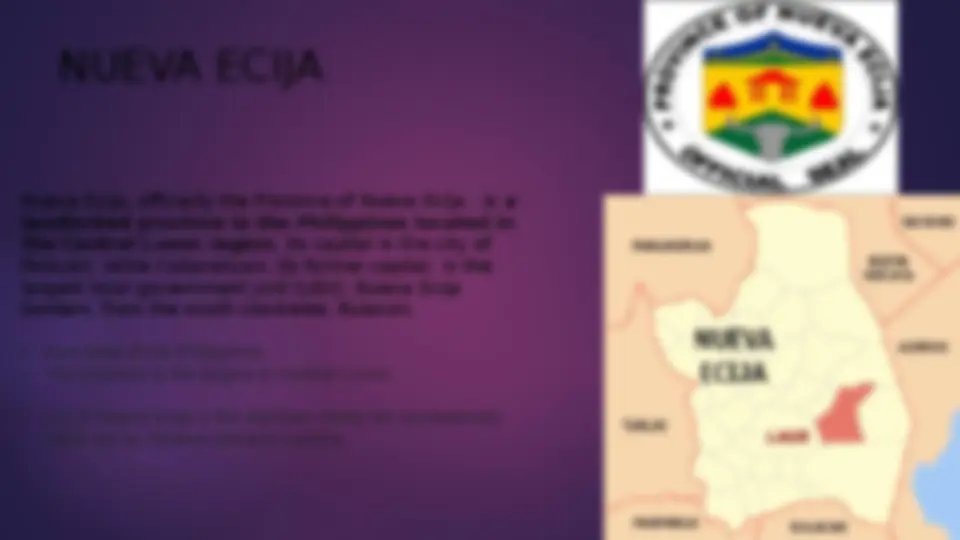


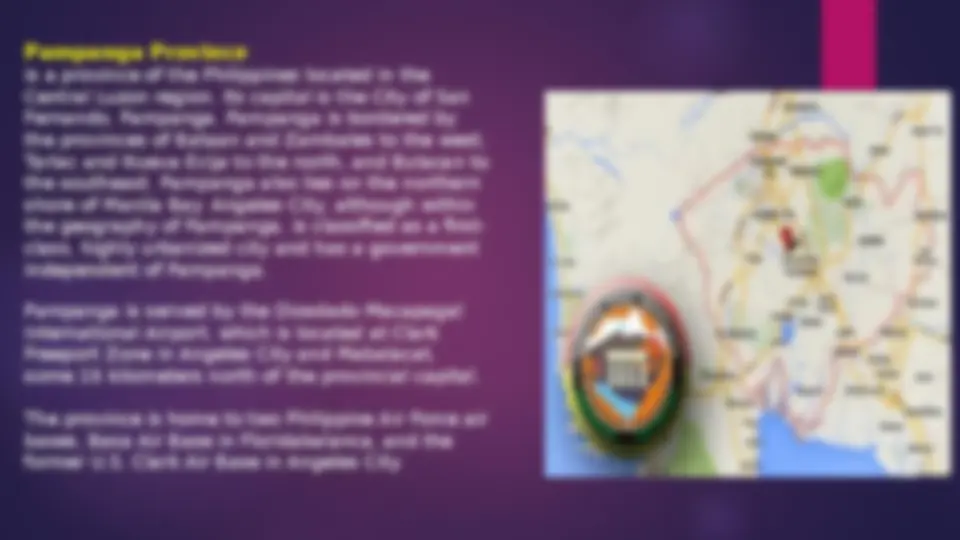

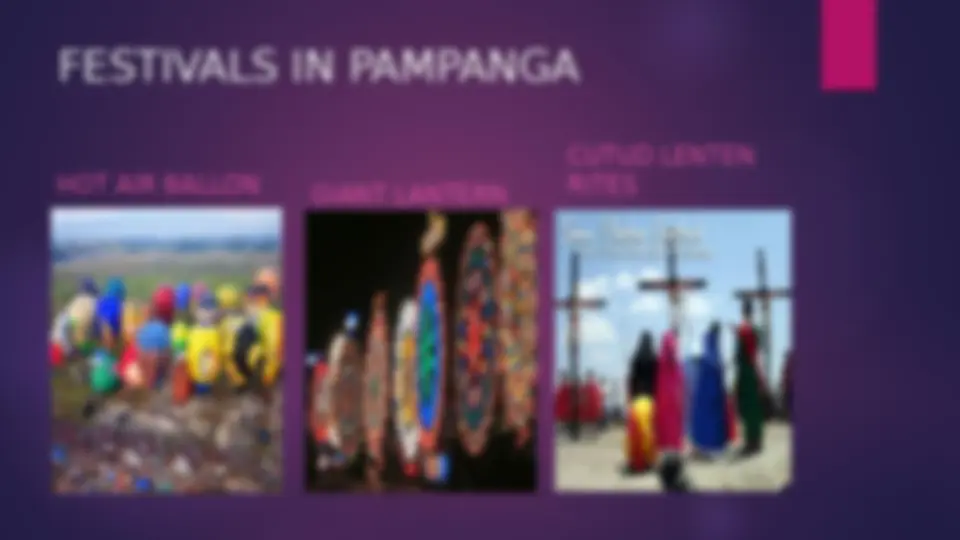
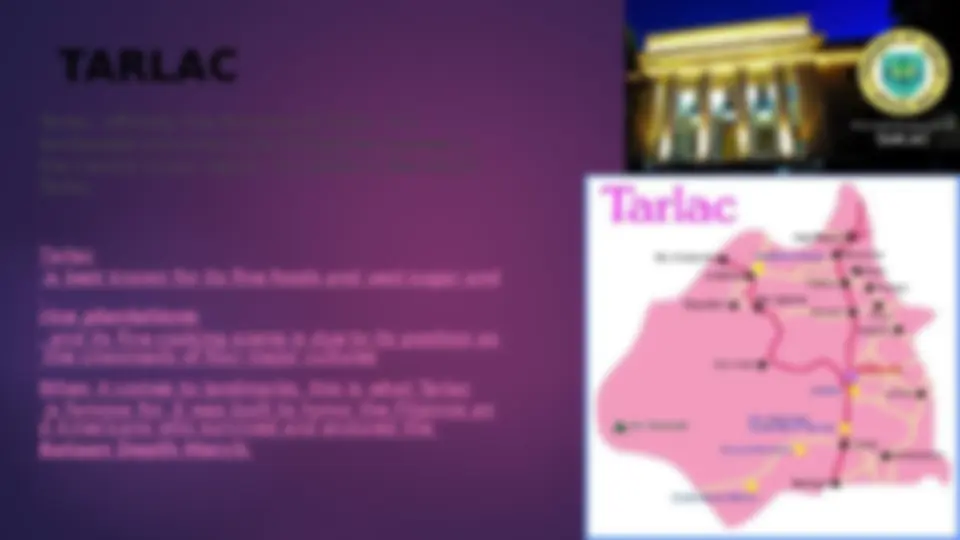
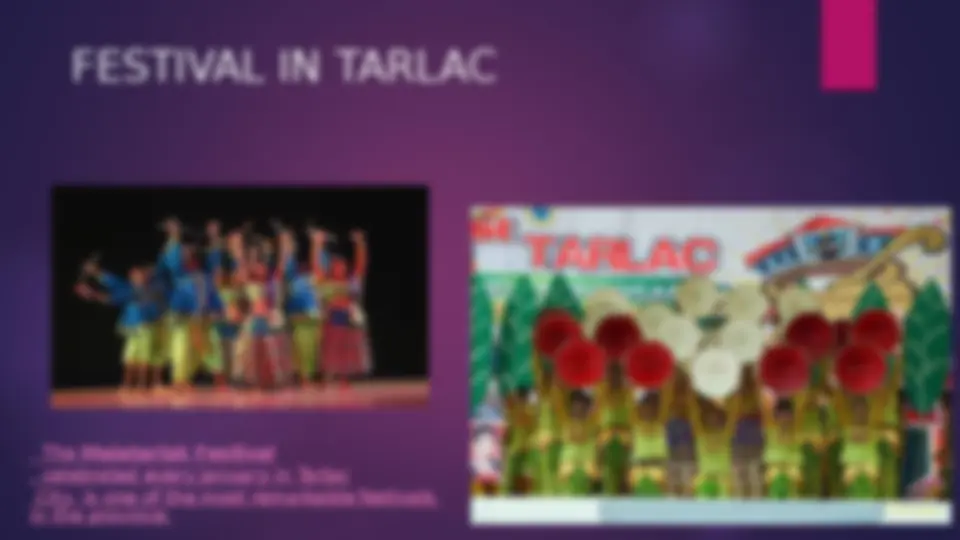


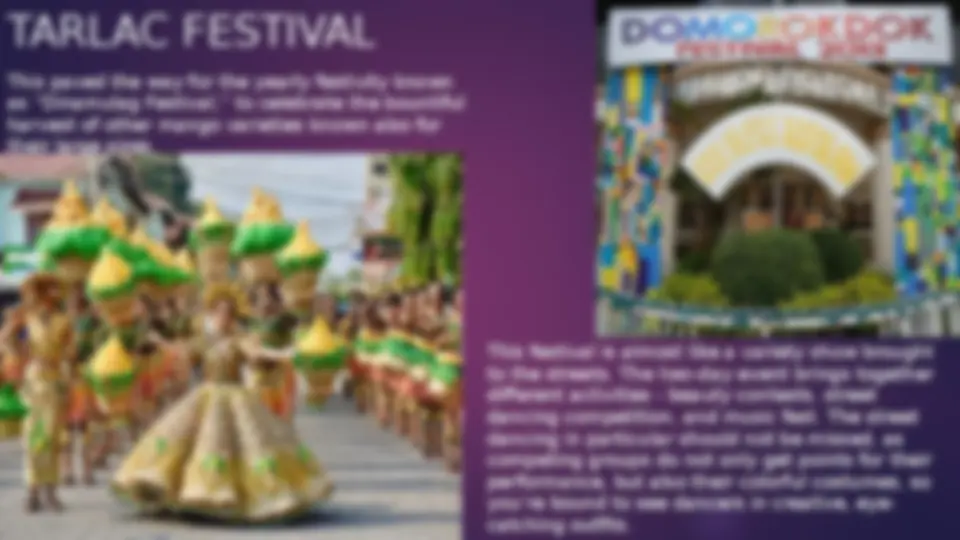


Study with the several resources on Docsity

Earn points by helping other students or get them with a premium plan


Prepare for your exams
Study with the several resources on Docsity

Earn points to download
Earn points by helping other students or get them with a premium plan
Community
Ask the community for help and clear up your study doubts
Discover the best universities in your country according to Docsity users
Free resources
Download our free guides on studying techniques, anxiety management strategies, and thesis advice from Docsity tutors
Explore the rich culinary and cultural heritage of Central Luzon, Philippines. Discover traditional dishes like Adobo sa Gatâ, Belekoy, Bistek Tagalog, Kare-kare, and Sisig. Learn about the history and festivals of provinces such as Aurora, Bataan, Bulacan, and Nueva Ecija.
Typology: Summaries
1 / 42

This page cannot be seen from the preview
Don't miss anything!



































BELEKOY
BISTEK TAGALOG Bistek Tagalog is a traditional meat dish originating from the Philippines. It consists of thinly sliced beef that's marinated and braised in a combination of citrus juice (usually from lemon, lime, or calamansi fruit), onions, garlic, soy sauce, and pepper. It is believed that the dish was derived after the Spanish bistec encebollado. When properly prepared, the flavors should be savory, salty, and tangy. It's important to use only the freshest beef and the most tender cuts such as top round and sirloin. The dish is traditionally garnished with pan- fried onion rings on top and served with steamed rice on the side.
KARE-KARE Kare-kare is a traditional Filipino stew consisting of meat such as tripe, pork leg, ox tail, goat or chicken, vegetables, and a thick, savory peanut sauce flavored with annatto seeds. Shrimp paste ( bagoong ) is often served on the side in order to enhance the flavors of the dish. Kare-kare is traditionally cooked in a clay cooking pot known as palayok , and the vessel also acts as a serving bowl once the dish is properly cooked. Nowadays, it is often served at numerous Filipino festivities. Some believe that kare-kare has origins in the Pampanga region, while others claim that the name of the dish is derived from the Indian word curry , and that it was introduced to the Philippines by Indians from the Rizal province
SISIG
Matapang na lider ng Himagsikang Filipino, si Mariano Llanera (Mar·yá·no Lya·né·ra) ay naging pinunò ng mga Katipunero sa Nueva Ecija at naglingkod na heneral sa ilalim ni Aguinaldo mulang Biyak-na-bato hanggang Digmaang Filipino-Amerikano. Naiiba ang kaniyang bandilang itim ang kulay at may nakahiyas na putîng bungo, magkakrus na buto, at titik na K. Ginugunita rin ang malikhaing taktika na ginamit niya sa paglusob sa garisong Espanyol sa San Isidro, Nueva Ecija noong sumiklab ang Himagsikang
BAYANING MARTIR
Carlos Romulo was born in
LOGO AND MAP OF REGION 3 CENTRA LUZON
(^) BALANGA CITY IN BATAAN (^) PALAYAN CITY (^) TARLAC IN TARLAC (^) MALOLOS (^) MEYCAUAYAN AND SAN JOSE DEL MONTE IN BULACAN (^) CABANATUAN (^) GAPAN (^) MUNOS (^) PALAYAN AND SAN JOSE IN NUEVA ECIJA (^) ANGELES CITY (^) MABALACAT AND SAN FERNANDO IN PAMPANGA (^) OLONGAPO IN ZAMBALES